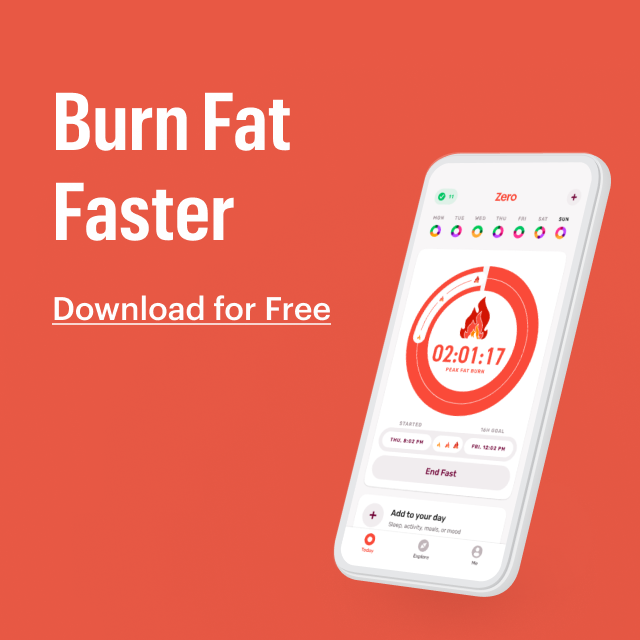Written and medically reviewed by Rich LaFountain, PhD
Whether you’re a frequent flier or a first-timer, traveling by plane is likely to induce some stress. From getting to the airport to checking in to arriving with all your luggage, flying comes with no guarantees. This inherent uncertainty, combined with less physical activity, reduced access to high-quality food, and upheavals to your everyday schedule, can throw even seasoned travelers off their health game.
Fortunately, there is a simple way to improve your travel experience, keep your health on track, and even reduce jet lag: fasting.

Why Fast While Flying?
Between the stress and boredom, it might seem crazy to fast while flying. However, if you want to avert that sluggish, hazy, I’ve-been-traveling-all-day feeling when you arrive to your destination, fasting might actually be your best bet.
For starters, you’ll actually cut down on your stress levels by fasting. Notice how people are scrambling around trying to fit in eating and snacking in preparation for or in between flights? When you’re fasting, you’re freed from all of that.
Furthermore, the food available in airports and on planes is notoriously of poor quality. When you fast throughout your entire trip, you’re not tempted by the ultra-processed snacks or fast food because your eating window simply isn’t open. Put another way: Everyone gets bored killing time at the gate or on the plane, but by fasting, you won’t automatically fill that time with crappy food that spikes your blood sugar and ends up leaving you depleted (and probably starving) by the time your plane lands.
Preparing for the Fast Before the Flight
First, during your final meal the evening before your flight, fill up with satiating foods, specifically ones with ample protein and fat. You can also eat carbs, which are often great to add to your final meal of the day because they help your body produce serotonin, a precursor for the melatonin you need for good sleep. Just make sure the carbohydrates you choose are fibrous (which also helps with satiety!) and lower on the glycemic index (so you don’t spike your blood sugar). Then, start your Timer and ensure you’ve set an appropriate fast length — which might be longer or shorter than usual, depending on your travel plans.
Second, while it’s generally ideal to fast through the duration of your flight, that’s not always possible (think: long delays, missed connections, trans-continental trips). If there’s a chance you’ll break your fast while en route, don’t count on having access to high-quality food choices in the airport. Instead, plan ahead and pack your own healthy, TSA-approved food so you aren’t forced into buying pre-packaged, ultra-processed options that are likely to lead to hunger and overeating.
Finally, don’t skimp on packing work and recreation materials such as a laptop or tablet; reading materials; and audiobooks, podcasts, or music you enjoy. Together, these items can keep you occupied in the airport and on the plane, thereby helping you avoid the proximity and temptation of fast food or unhealthy ultra-processed snack foods (which should already be off-limits given that you’re fasting, but hey, distractions still help!).
Adjusting Your Fasting Schedule to Accommodate Jet Lag and Time Differences
One of the most common complaints from air travelers who cross time zones is jet lag — essentially, exhaustion or an inability to sleep (often accompanied by worsened cognition, poorer physical performance, and/or gastrointestinal problems) caused by disruptions to your body’s natural clock. Particularly on eastbound flights, the time zone changes force you to either stay up until “morning” at your destination or go to sleep extraordinarily early, ultimately impacting your circadian rhythm and your body’s ability to get restful, healthy sleep.
Fortunately, you can use what you eat and, more importantly, when you eat as tools for preventing, reducing, or even eliminating the combined effects of travel fatigue and jet lag. In one study, research participants followed a complementary nutrition and fasting strategy known as the Argonne Anti-Jet-Lag Diet. This strategy involves prioritizing high-protein foods early in the day and eating whole-food carbohydrates with dinner in order to help your body to regulate hormone levels. In particular, this diet is meant to regulate the sleep hormone melatonin in order to help you keep your sleep schedule on track despite unusual light and dark cues during your travel.
In addition, participants followed a modified alternate-day fasting regimen, which reinforced their circadian-rhythm shifts. The study found that the participants who followed the diet and fasting schedule for four days prior to their flight were 7.5 times less likely to experience jet lag or acute illness in association with their travel. If you’re interested in trying the Argonne diet strategy to minimize jet lag, the study suggests completing two cycles of alternate-day fasting (four days total) prior to your trip.
4 More Foolproof Tips for Fasting While Traveling
To further reduce jet lag and keep your health journey on track, here are four more fasting tips to follow while traveling.
#1. Focus on Hydration
Hydration is always important, but particularly when you’re traveling, it’s easy to neglect getting sufficient fluids, and their benefits are even more pronounced. For instance, research has shown that fast-friendly beverages are helpful in reducing hunger, especially hunger associated with boredom. Therefore, bring a reusable water bottle you can refill throughout your journey, and make sure to pack your favorite fast-friendly electrolyte tablets or powders to stir in once you get past security and fill up your bottle.
Additionally, when you’re fasting, and especially when you’re at altitude, your hydration needs increase. Therefore, focusing on drinking more fluids — rather than eating crappy airplane food — can help you maintain healthy hydration levels and keep your fast on track.
#2. Exercise at the Airport
Like it or not, there’s often a lot of downtime at an airport. Maybe you got there early and zoomed through security, or maybe you’re waiting out a flight delay. Instead of twiddling your thumbs at the gate or snacking at an overpriced restaurant, use this as an opportunity to enhance your metabolic health — get some zone-2 exercise. If you’re not into simply walking and people-watching, make it a game: How many gates can you walk past? Can you make it to the next terminal in less than ten minutes? If you’re traveling with friends or family, take turns watching your bags or, if everyone checked their bags, take a walk together! If you’re alone, try reframing the baggage you’re carrying as an advantage: Now that you’re carrying more weight, you don’t need to walk nearly so fast to get your body into zone 2!
#3. Consider a Modified Fasting Approach
Fasting is especially handy when you’re traveling because it can make complicated dietary decisions simple and binary. When you’re fasting, it’s easier to say “no” to the ultra-processed airplane snacks because your eating window is not yet open. However, in some cases, your travel itinerary exceeds your fast length. In these instances, you can fully break your fast, or you can shift to a modified fasting approach.
Modified fasting is a version of fasting that allows some calorie consumption, typically up to 20–25% of your normal daily amount. This is an ideal strategy if you’re aiming for a longer fast than usual, because remember: You don’t want to put undue stress on your body with an overlong fast (and/or arrive so ravenous that you make poor Fast-Breaker choices!). With modified fasting, you’ll lean into foods or beverages that can tide you over until your Timer turns green and your eating window opens — ideally after you reach your destination — without knocking you out of fasted metabolism.
If you want to retain similar benefits to true fasting, it’s essential to avoid carbohydrates, namely anything that would increase your glucose and insulin levels. You may eat some ketogenic foods like slices of avocado, full-fat yogurt, hard cheeses, or jerky. You may also consider adding some fat (e.g., coconut oil, butter, or cream) to your coffee, which helps keep your fat-burning levels elevated.
#4. Have a Spectacular Fastbreaker
Keeping your Fasting Streak alive while traveling is not always easy, especially if you’re attempting it for the first time. Therefore, to increase your motivation and create a positive feedback loop, plan to reward yourself with an out-of-the-ordinary Fast Breaker. Rather than simply arriving at your destination and settling for whatever is available, do a little advanced research and planning to find something you truly love. As always, you want healthy, whole-food, protein-rich options, but you can use this occasion to sample local flavors or specialties. Plus, research indicates trying a new type of food (and increasing your dietary variety) at your Fast-Breaker meal provides a unique opportunity to improve your gut-microbiome diversity!
One Final Caveat
Now remember: It’s travel, which means you’re going to encounter some unavoidable psychological and physiological stressors. (Merely cruising at 20–35,000 feet above sea level is a significant stressor on its own!) Therefore, this is probably not the time to try enhancing your metabolic health with an extra-long fast if you aren’t accustomed to this fast duration; overstressing the body while traveling is counterproductive if you’re trying to arrive well-rested and ready to go. Instead, sit back and reap the benefits of following your fasting practice: a less stressful, healthier travel experience.
Conclusion
Maintaining a consistent fasting practice while you travel is not only good for your long-term metabolic health, it’s also an incredible tool to help you fight travel fatigue and jet lag. In some cases you’ll need to do a little pre-planning, and you may even need to adapt your fasting practice depending on the circumstances — but you can be consistent. Your body will thank you for it!
- Debunking 3 Myths Around Fasting and Thyroid Health - April 15, 2024
- Breaking Down Fast Breakers: How to Tell If Something Will Break Your Fast - March 4, 2024
- GLP-1s and Weight-Loss Medications vs. Lifestyle Interventions: What’s Right for You - February 5, 2024






